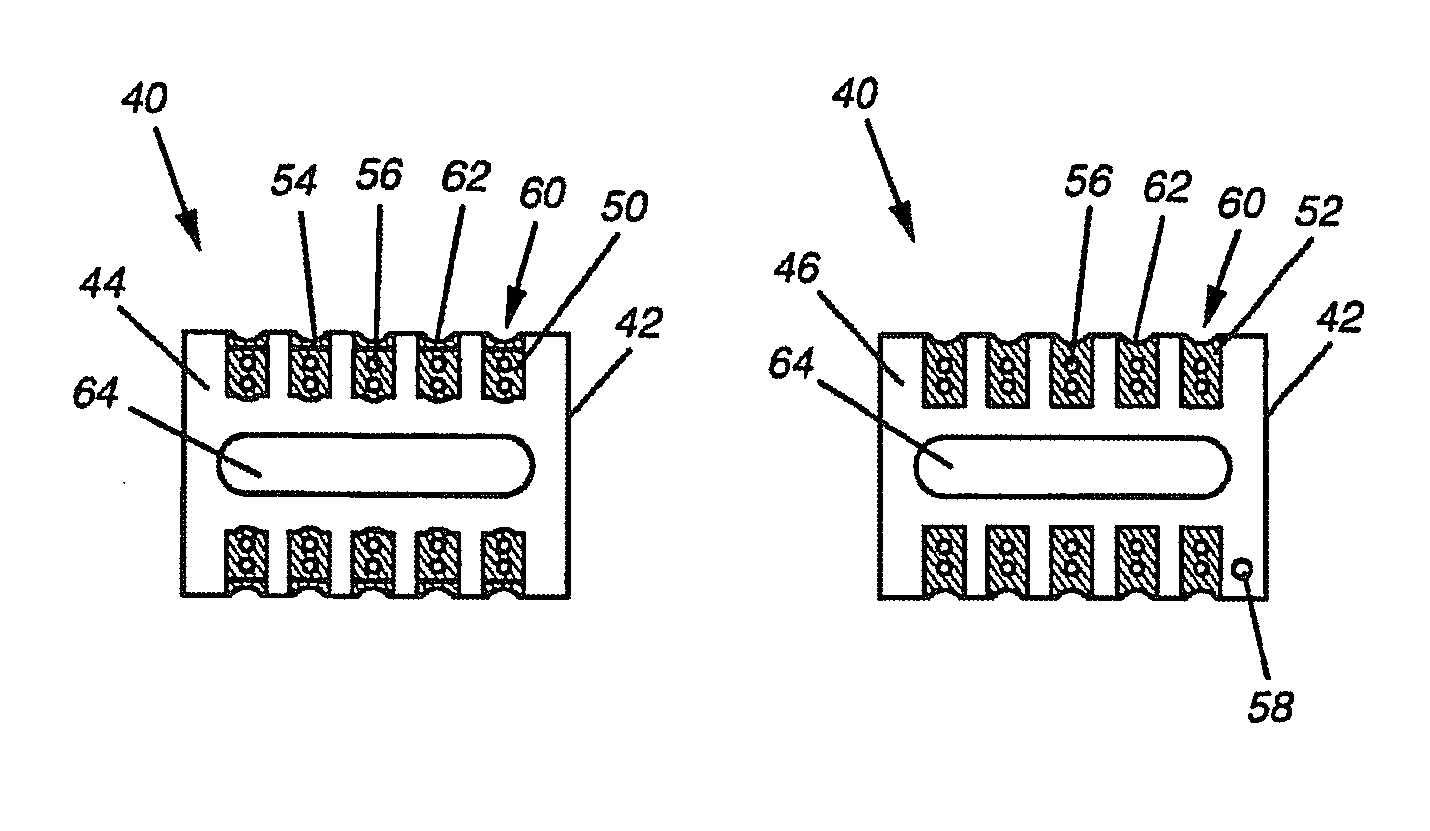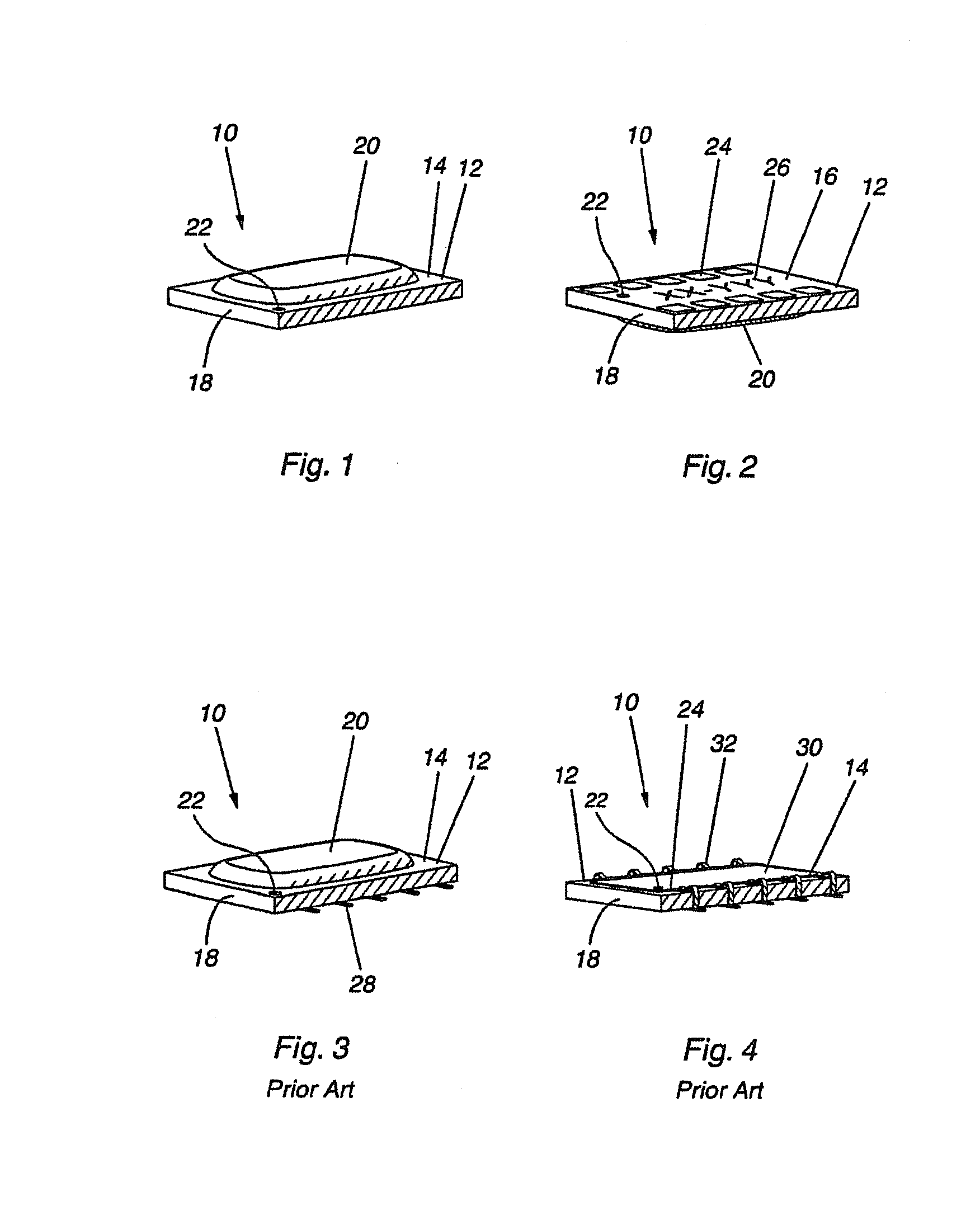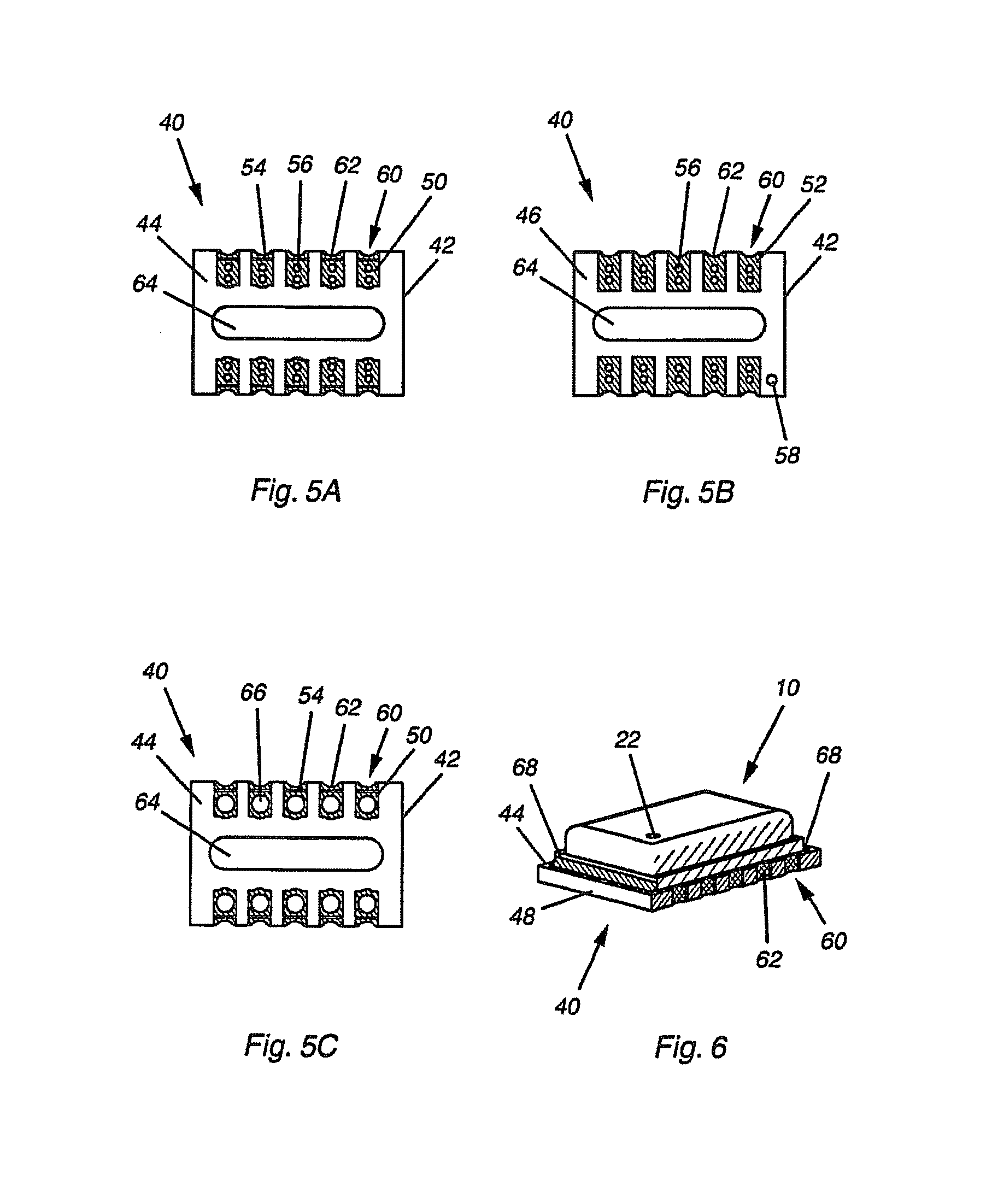Carrier for LTCC components
a carrier and cofired ceramic technology, applied in the direction of printed circuit aspects, printed circuit stress/warp reduction, semiconductor/solid-state device details, etc., can solve the problems of difficult inability to use gold over nickel as a finish for most ltcc designs, and difficulty in visual inspection of solder joints, so as to reduce the amount of pcb real estate, reduce the amount of metal leaching, and increase the resistance to thermal stress and mechanical shock
- Summary
- Abstract
- Description
- Claims
- Application Information
AI Technical Summary
Benefits of technology
Problems solved by technology
Method used
Image
Examples
Embodiment Construction
[0047]Referring to FIGS. 1 and 2, an LTCC component 10 is shown with a plastic-encapsulated semiconductor die 20 mounted on the LTCC top surface 14. Mounting orientation of the component 10 is shown by the orientation mark 22 placed on both the LTCC top surface 14 and the LTCC bottom surface 16. The LTCC bottom surface 16 also features an identification mark 26, and conductive termination pads 24 with which the component 10 is soldered to a substrate, typically a PCB. The component body 12 is composed of low temperature co-fired ceramic (LTCC) and has a different coefficient of thermal expansion (CTE) than the fiberglass and epoxy PCB that it is soldered to. Additionally, the standard material that the conductive termination pads 24 are made of is a palladium silver alloy (PdAg) which has been found to leach out during successive heating cycles such as those experienced during reflow soldering. Both the CTE mismatch and the leaching of metal from the conductive termination pads 24 c...
PUM
 Login to View More
Login to View More Abstract
Description
Claims
Application Information
 Login to View More
Login to View More - R&D
- Intellectual Property
- Life Sciences
- Materials
- Tech Scout
- Unparalleled Data Quality
- Higher Quality Content
- 60% Fewer Hallucinations
Browse by: Latest US Patents, China's latest patents, Technical Efficacy Thesaurus, Application Domain, Technology Topic, Popular Technical Reports.
© 2025 PatSnap. All rights reserved.Legal|Privacy policy|Modern Slavery Act Transparency Statement|Sitemap|About US| Contact US: help@patsnap.com



